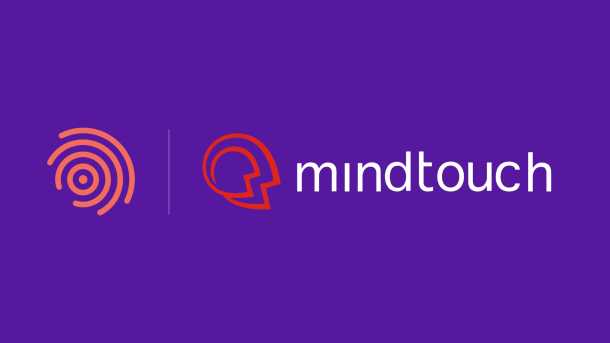Translation: What, Why, Who, Where, When, and How
Expanding into a foreign market can be a powerful way to grow your brand’s international presence and drive revenue growth.
To nail this kind of strategy, you’ll need to create immersive, native brand experiences in every locality you choose to target, at scale.
The first step, translation, is not as simple as it might appear.
From web pages and blog and email content to the actual in-app or product experience, translation is a mammoth task. And that’s before you consider the intricacies of cultural differences in pop culture references, humor, slogans, idioms, and symbols.
In this comprehensive guide, we’re going to help you get translation right—the first critical step in creating a native brand experience.
First, let’s take a look at what that means, exactly.
What is a native brand experience?
At the heart of every native brand experience must be the consumer’s or buyer’s interests—it is their experience, not the brand’s, that matters.
A brand’s message is most often a universal one, but the means and medium through which it is delivered differ from country to country.
Native brand experiences come in all shapes and sizes, but there are a few core principles that connect them:
- Command of local dialects (beyond standard translation), as well as regional preferences and tastes
- Commitment of all stakeholders to respect cultural sensitivity in all markets at all times
- Detailed awareness of market variables, from currencies, customs, products, and preferences to buyer personas and behaviors
From the customer’s perspective, a native brand experience feels like the brand they are interacting with is native to their locality—that it understands their dialect, use of idioms, and other cultural norms.
Why do native brand experiences matter?
The best way to understand why a native brand experience is important is to consider what happens in the absence of effective localization.
Here’s a very simple yet incredibly telling example.
Many companies have started using emojis in their marketing copy, but some symbols are not universal.
The “thumbs up” gesture (this one 👍) in the Western world is considered a sign of approval. In the Arab world, it's more akin to giving the middle finger.
Focusing on building a native brand experience ensures you avoid these kinds of embarrassing and growth-limiting mistakes.
More than that, native brand experiences serve as anchors to the brand rather than the brand acting as a focal point, because the focus has rightly become the buyer or consumer.
With information open and, for the most part, accessible to all, many brands have already lost the fight to be “top of mind” in their vertical.
But those brands that are winning understand that choice is everywhere; control of a brand is now with the people it engages (not the company promoting it); and to get ahead globally, native brand experiences must be generated in conjunction with local customer buying behaviors and feedback.
Businesses—B2B and B2C—who break out of their home-language comfort zone to offer native brand experiences in all markets will make the most of potentially infinite international opportunities.
Their competitors, using traditional tactics, will not.
Who is involved in native brand experiences?
First and foremost, the consumer or buying persona needs to be an ever-present consideration in creating native brand experiences.
All conversations and considerations related to translation and localization must keep the local customer—their preferences, desires, and experience—front of mind.
Creating and delivering native brand experiences is a company-wide job.
The C-suite is the most likely driver of native brand experiences as a growth strategy. They’ll be championing the concept and driving the vision, working directly with marketing and/or localization leadership, who will ultimately own the native brand experience.
Marketing will often orchestrate translation—whether through managed translation services, an AI-powered translation tool, or a combination thereof (though some companies will go a step further and onboard a dedicated localization resource).
They’ll also be responsible for aspects of localization such as market research, customer surveys, and message testing.
Both B2C and B2B marketing rely on winning content strategies to acquire customers, generate leads, and grow business.
To deliver native brand experiences, creating “resonant content” is key.
But in truth, the shift to cultivating native brand experiences for current and potential customers should be an organization-wide effort, even if this is just making sure the entire company is aware of and on board with this new direction.
Where are native brand experiences needed?
Native brand experiences are brand experiences outside a brand’s market.
They are, therefore, designed to work anywhere and everywhere a brand seeks exposure and engagement.
To be truly effective, the customer experience must be native in every interaction.
This starts when the customer first discovers your brand, be that through social media posts, blog content, or paid ads.
It flows across the full customer journey, from your sales emails to your website’s on-page experience and into the actual interaction with your product or service.
Native brand experiences are also required post-sale across customer service, success, and support efforts.
When launching a new product, service, or campaign outside a home market, the idea is to see interactions from the consumer viewpoint—i.e., to resonate with who they are and what they want—in their language, culture, and location.
When are native brand experiences relevant?
Branded content—especially when directly related to products, services, the brand, or the business—will be suitable to translate and localize for most targeted languages or locations.
In fact, such content should generally be translated for all to avoid any audience feeling less important than other markets served.
Some content will need to be transcreated (effectively a rewrite rather than a standard translation) or created solely for a very specific individual market or campaign.
This helps a brand reach and properly engage with its intended audience and also supports market-specific business goals and outcomes.
How can brands consistently ensure customers enjoy native brand experiences?
Native brand experiences are all about resonating with anyone and everyone, anywhere and everywhere, at any time and all the time. But how can a brand achieve this 24 hours a day, seven days a week?
The first step is for the CEO to support the union of tech and marketing and make this an urgent priority, one that will ensure the reach and longevity of any brand.
Second, as mentioned, everyone from the C-suite down has to understand the new direction and participate according to their role within the new context.
Technology needs to be introduced and integrated, with all users sufficiently trained, to remove any downtime and ensure that a state-of-the-art technology stack accurately and efficiently supports all native brand experiences for top value and an impressive ROI.
Third, brand experiences and content marketing involve engaging and offering the best chance to resonate with an audience.
Native brand experiences achieve this on a global scale by involving, engaging, and resonating with many audiences in any language, across all cultures, and in every market at each touchpoint.
Translation’s role in creating native brand experiences
Translation is what drives native brand experiences in every new territory you seek to enter.
But quality translation in the context of customer experience isn’t just about the swapping out of words and phrases from one language to another (we’ve all had our share of interesting experiences using the likes of Google Translate).
To successfully translate existing content into brand experiences that connect with local audiences at scale, you need the best of both worlds: The accuracy that human translation offers and the scale that AI brings.
Smartling’s AI-Powered Human Translation services help you deliver consistent, on-brand communications and drive localization by:
- Going beyond word-for-word translation by providing consistency with local language, dialects, and idioms
- Ensuring your translated content always adheres to your brand guidelines, no matter the language
- Supporting multiple document types (e.g., CSV, HTML, DOCX) to enable content translation at scale
Through the use of Smartling’s technology, friction caused by traditional translation processes is removed, allowing brands to focus on what truly matters: Delivering high-quality native brand experiences.
Leverage advanced translation technology to empower native brand experiences
Native brand experiences resonate with buyers and customers in any language, all cultures, and every market—and are essential to global success.
Does your brand deliver?
Smartling can help you develop a global content strategy that will propel you into new markets, fuel global growth, and increase your bottom line.
Our translation management software prioritizes process automation and intelligent collaboration so that companies can quickly and cost-effectively localize their websites, apps, and documents with minimal IT involvement.
Additionally, our curated network of professional translators is continuously measured to ensure the highest quality standards and is readily available to serve a variety of linguistic needs.
Transform your global messaging with Smartling's state-of-the-art translation services today.






